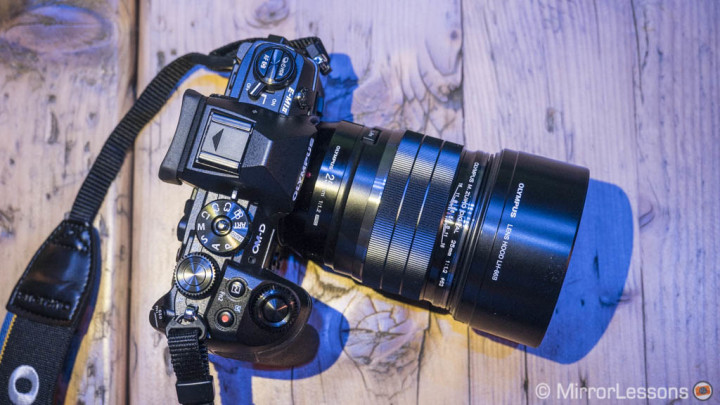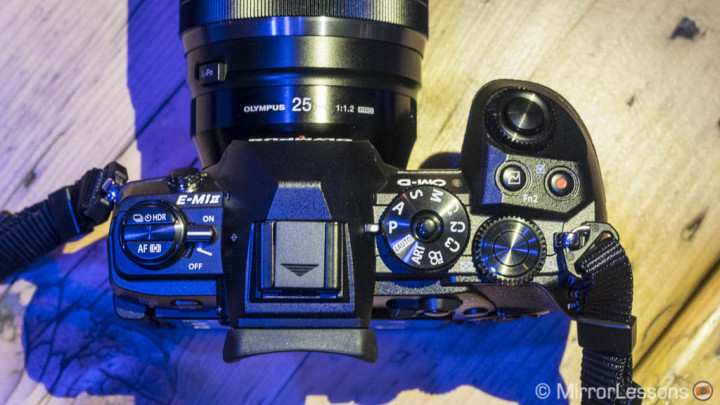Between trying out all the new mirrorless products and the various press events at Photokina 2016, we also managed to fit in time for a couple of interviews. The second was with Mr. Setsuya Kataoka, Deputy Devision Manager, Imaging Product Development Division at Olympus. We covered a number of topics, from the new E-M1 II and High Res Shot to professional support and the Kumamoto earthquake.
ML: When did the OM-D E-M1 II design process begin and what was the most challenging aspect of the development?
SK: We started developing the E-M1 mark II right after E-M1 appeared on the market. One of the biggest challenges was “how to increase the AF speed” which was the demand from the market at that time.

ML: The new High Res Shot mode can correct artefacts related to moving elements, like the flowing water or leaves in a trees. How effective is the correction?
SK: This is really difficult to define. Currently to do High Res Shot for moving subjects is still a challenge. At this moment, the current focus is how to stop this moving subject from affecting the overall picture. Having 50MP resolution for the moving subject is the next development point.
ML: There have been rumours about a possible hand-held High Res Shot mode. Is such a technology even possible, theoretically speaking?
SK: Yes, in the future of course, we are heading in the direction of developing and enabling a hand-held 50MP High Res Shot mode. However, for the current model, the research and development point was the technology where we shoot 8 pictures with a half pixel difference and combining this – taking 8 pictures at the same time using precise image stabilisation – is very difficult technology-wise. So this time we’re focusing on this point but of course to enable hand-held is within the scope of research and development in the future.
ML: With the 300mm Pro, Olympus proved how great the combination of sensor and optical stabilisation can be. Since the new 12-100mm f/4 also has IS, should we expect more lenses with IS in the future?
SK: Yes, of course, we are planning to increase the lenses that support the Sync IS function because having Sync IS means the IS performance will improve, not only for stills but for movies as well.

ML: Did you consider faster apertures than f/1.2 at the beginning and if so, what stopped you from producing an even faster lens?
SK: Actually going above f/1.2 is technically possible but definitely there is the limitation of size. One of the strong points of MFT is being light, compact and small, so to make the lens faster than f/1.2 will make the lens bigger. Therefore to have a good balance between the lens brightness and compact mobility, we decided to develop it at this aperture.

ML: In Europe, professional support will now be available in 17 countries. Will it eventually be available worldwide?
SK: The professional support that we have announced is only for Europe. Japan has their own professional support service. The professional line-up has been enhanced so therefore the European team decided to support this professional niche. As for the US and Canada, since each region has different necessities, it isn’t clear whether it will be the same concept as the European support.
ML: Would you consider expanding it to other Olympus products in the future or will it remain exclusively linked to the E-M1 II?
SK: Yes, of course, in the future we would like to widen the professional support but at this point the priority is to be successful with the E-M1 II professional support.
ML: How much has the Kumamoto earthquake impacted plans for new camera releases? How long will it take for the camera industry to recover?
SK: It is difficult to specifically answer this question but for the production schedule there was a big impact, not only on the new products but the current products as well. Also development-wise, since it has affected the supply of some key devices, of course the R&D schedule was affected. But to say how each model was affected is hard to answer because it depends on how much stock we had and how much stock our supplier had. It’s case by case.
ML: Micro Four Thirds system has gone from targeting entry level/enthusiast users to advanced/professional photographers: where will the system head in the years to come?
SK: So, whether it’s entry level or professional, this is hard to answer. Still, we are aiming to satisfy the professional users’ demands. For instance, we believe that our professional lens line-up isn’t sufficient enough – not only the lenses but there are also a lot of demands from professional users. So, we will try to continue to satisfy this demand. When we launched the mirrorless concept, one of the targets was to generate a new market so at the same time, not only do we have to support professionals but we also have to develop products to open up new markets. It is a two-tier approach.
ML: Smartphones have had a big impact on the digital imaging industry. The compact camera market is dying and sales aren’t fantastic. Is there a way camera companies can reconquer the masses or will photography products become more and more niche?
SK: Once again this is a hard question to answer. We believe that one of the failures of camera manufacturers is that they compared the image quality of smartphones and cameras. But this was not the real comparison point for the smartphone. They have transformed not only the way of taking pictures but also sharing the photos and the so-called digital workflow – they have a better digital workflow. But since we have been continuously communicating “image quality, image quality” we are not able to grasp the actual market needs. This was the failure of camera manufacturers in general. As long as we continue to say that IQ is better, we probably won’t be able to stop current market decline. Therefore we will have to find a way not to compete but to co-exist with the smartphone industry.
ML: Thank you for your time, Mr. Kataoka!
Additional reads: